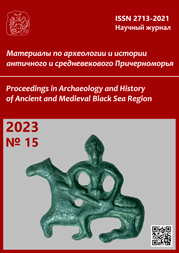The spread of Chalcedonism in Tayk and its influence on the formation of the historical and cultural environment
The spread of Chalcedonism in Tayk and its influence on the formation of the historical and cultural environment
Author(s): Liana Nazaryan, Davit Nahatakyan, Armen Hayrapetyan, Hakob Muradyan, Hasmik Matikyan, Arkadi AkopovSubject(s): History, Ancient World, Middle Ages, Theology and Religion, History of Religion
Published by: Нижневартовский государственный университет
Keywords: Armenian Apostolic Church; confession; Chalcedonism; church assembly; Byzantine Empire; Kgharjk; Kurapalat; Armenians; Georgians; Iberians;
Summary/Abstract: In 451, after the Ecumenical Council of Chalcedon, Chalcedonism spread in Armenia, especially in Tayk. With its spread, Georgian penetrated there having an impact on the historic and cultural life and the ethnic image of the region. A part of the Armenians, breaking away from the Armenian Church, became Georgian-speaking. The study aims to analyze the process and the ethno-religious environment resulted from the impact of the new confession. In Tayk, a bishop’s seat was founded as early as the 4th century by Gregory the Illuminator, and it continued to be a diocese of the Armenian Apostolic Church, which is testified by the fact that the names of the bishops of Tayk have been remembered at church meetings etc. until the 9th — 10th centuries. Chalcedonism and Georgian writing and literature rooted in the region as late as the 9th — 10th centuries, when the Bagratunis, the local ruling elite, accepted the Chalcedonian confession. As a result, the population of Tayk and their rulers were called ‘Georgians’ or ‘Iberians’ in both Armenian and foreign records. In Tayk, even church ceremonies were performed in Georgian, though Armenian was also used.
Journal: Материалы по археологии и истории античного и средневекового Причерноморья
- Issue Year: 2023
- Issue No: 15
- Page Range: 736-744
- Page Count: 9
- Language: English

